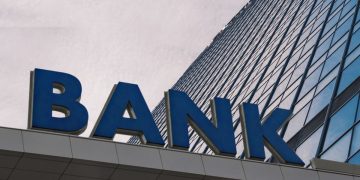By Ryan Kiryanto, Economist and Co-Founder & Expert Board of the Institute of Social, Economic and Digital/ISED
Jakarta – IT can be said that it was quite surprising when the Board of Governors Meeting of Bank Indonesia on September 21-22, 2022 decided to increase the BI 7 – Day Reverse Repo Rate (BI7DRR) by 50 bps to 4.25%, followed by an increase in the deposit interest rate. Facility by 50 bps to 3.50%, and an increase in Lending Facility interest rates by 50 bps to 5.00%.
The decision was quite surprising, because the majority of economists predicted an increase in Bank Indonesia’s benchmark interest rate by only 25 bps to 4%. Likewise with the increase in the Deposit facility and Lending facility, each of which was 25 bps. Thus, the decision of Board of Governors Meeting of Bank Indonesia this time confirms the stance or view of the central bank going forward that is tighter (hawkish) with the main consideration being inflation expectations that exceed the inflation target of 2%-4% after the fuel price hike. Only a minority of economists expected a 25 bps increase to 4%. And perhaps none of the economists expect Bank Indonesia will hold its benchmark interest rate in decision making this time.
In general, the background and basis for consideration of an increase in the Bank Indonesia rate of 50 bps, which can be said to be out of the ordinary because usually an increase of only 25 bps, is acceptable and logical. One of the main objectives is clearly to control the inflation rate so that it does not fall far outside the corridor of expectations and the inflation target of 2%-4% by the end of this year. Even if in the end the realization of annual inflation will exceed the target, which has an upper limit of 4%, the excess will not be exaggerated or excessive so that it has the potential to distort the wheels of the national economy.
With this decision that is considered upfront loading or front-loaded Bank Indonesia’s stance which is ahead of the curve would like to emphasize that Bank Indonesia has actually taken a step forward (forward looking oriented) to lower the inflation rate to the target in mid-2023 according to its target of 2%- 4%. Parallel to that, the decision this time is also to maintain exchange rate stability against the world’s strong currencies, especially the US dollar which has recently experienced extraordinary appreciation which has led to the phenomenon of the super strong US dollar following the increase in the Fed’s interest rate/FFR) which was aggressive 75 bps this September to 3.0-3.25%.
Thus, the increase in the Bank Indonesia rate of 50 bps gives a signal that Bank Indonesia is indeed conducting a very careful and measured assessment by looking at the development of domestic (internal) and international (external) dynamics. With such an increase in the Bank Indonesia rate, it is expected that the movement of the Rupiah exchange rate will be in accordance with its fundamental conditions amidst the high uncertainty of global financial markets.
In fact, there is sufficient ammunition for strengthening the Rupiah here, including both from the current economic conditions and forecasts in the future. Economic growth is still in line with market expectations, especially with the continued strength of household consumption, supported by a consistent trade balance surplus for months and lastly in August of USD5.76 billion, higher than the surplus in the previous month of USD4.22 billion.
Another thing, the good news came from the Asian Development Bank (ADB) which yesterday revised upward the outlook for Indonesia’s economic growth this year to 5.4 percent, which gives more confidence to market players. ADB also slightly revised down its projection for Indonesia’s economic growth in 2023, from 5.2% in the previous projection to 5%, or down 0.2%, due to the estimated global economic challenges that will affect Indonesia and also due to the normalization of economic and monetary policies. in several countries in the world. Meanwhile, next year’s inflation rate is estimated to be at a high level, namely 5.1% or higher than the previous projection of 3%. This is also one of the basic considerations for BI to increase the BI Rate this time by 50 bps.
As in the previous months of Governors Meeting of Bank Indonesia, which always carried the spirit of optimism, the results of the Governors Meeting of Bank Indonesia decision this time with the theme Synergy to Maintain Stability and recovery momentum also gave the same nuance. Whereas, the central bank’s stance is to continue to strive to maintain macroeconomic stability (especially a stable exchange rate and control the inflation rate after the increase in fuel prices) and support the ongoing economic recovery following the successful control of the Covid-19 pandemic.
With the increase in the BI rate by 50 bps to 4.25%, it indicates that the tightening policy measures have already begun. Therefore, the financial sector, including the banking sector, will of course respond with caution in order to remain able to set pricing or interest rates that are appropriate and accommodative to the liquidity conditions of each bank.
On the business side, of course, they will also recalculate both the position of the placement of funds (as depositors) and the position of borrowers of funds (obligors or debtors). A review of fixed and variable cost items or expenses (variable costs) and income items (fixed and variable) must also be carried out so that the cash flow rate, liquidity condition and profitability are well maintained and sustainable.
In essence, players in the financial sector and the business world must remain calm in responding to the central bank’s policy, which this time shows signs of tightening. This is because the central bank is also still providing room for economic growth through non-interest policies, including continuing the sale/purchase of SBN in the secondary market ( operation twist ) to strengthen the stabilization of the Rupiah exchange rate, continuing the policy of transparency of the basic lending rate (SBDK) with a deepening of aspects of bank profitability, encouraging the acceleration and expansion of the implementation of digitalization of payments in the regions by utilizing the momentum of implementation and determining the winner of the Championship Acceleration and Expansion of Regional Digitization and encourage acceleration of achieving 15 million QRIS users as well as increasing the use of BI-Fast in payment transactions. (*)













